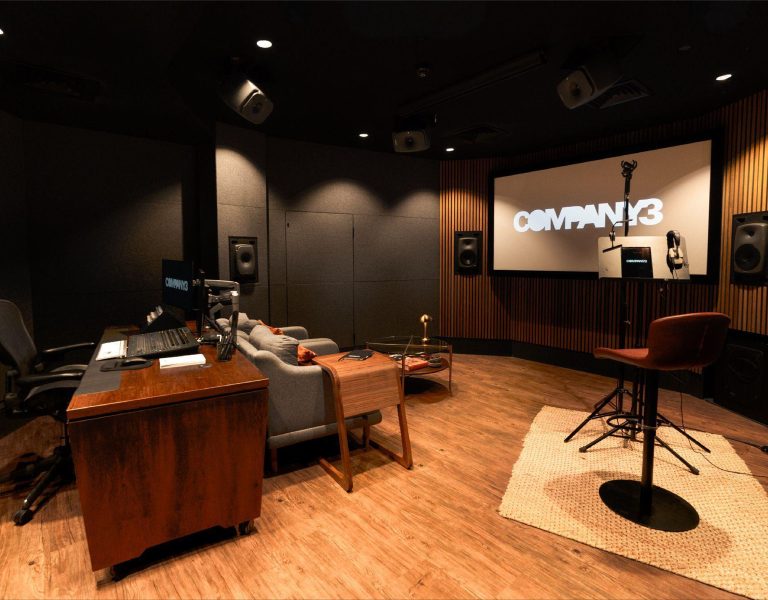
This release introduces powerful new features for creators across game development, film and television, architecture, automotive, and beyond.
Highlights include major updates to their in-camera visual effects toolset for virtual production, enhancements to GPU Lightmass for significantly faster light baking, integration of the Oodle Compression Suite and Bink Video codecs for free use in Unreal Engine, production-ready Pixel Streaming, production-ready OpenXR support, Datasmith upgrades, and much more.
Improved in-camera VFX workflows
This release introduces a slew of improvements to the efficiency, quality, and ease of use of Unreal Engine’s in-camera visual effects (ICVFX) toolset一making it faster and easier than ever to utilise this virtual production technique that is changing the face of filmmaking.
With the new 3D Config Editor in 4.27, users can more easily design their nDisplay setups for LED volumes or other multi-display rendering applications. All nDisplay-related features and settings are now combined into a single nDisplay Root Actor for easier access, and the addition of multi-GPU support now enables nDisplay to scale more efficiently. Multi-GPU support also enables users to maximise resolution on wide shots by dedicating a GPU for in-camera pixels, and to shoot with multiple cameras, each with its own uniquely tracked frustum. Additionally, 4.27 adds support for OpenColorIO to nDisplay, ensuring accurate color matching of Unreal Engine content to what the physical camera sees on the LED volume.
Also in 4.27, Unreal Engine’s Virtual Camera system has been significantly enhanced, adding support for more features such as Multi-User Editing, and offering a redesigned user experience and an extensible core architecture. Live Link Vcam, a new iOS app, enables users to drive a Cine Camera in-engine using an iPad. There are also improvements for producing correct motion blur in traveling shots, accounting for the physical camera with a moving background.
Lastly, new Level Snapshots let users easily save the state of a given scene and later restore any or all of its elements, making it simple to return to a previous setup for pickup shots or for creative iterations.
Faster light baking
Unreal Engine 4.27 offers many enhancements to GPU Lightmass, including more feature support and increased stability. The system uses the GPU rather than CPU to progressively render pre-computed lightmaps, leveraging the latest ray tracing capabilities with DirectX 12 (DX12) and Microsoft’s DXR framework.
GPU Lightmass significantly reduces the time it takes to generate lighting data for scenes that require global illumination, soft shadows, and other complex lighting effects that are expensive to render in real time. Since users can see the results progressively, it’s easy to make changes and start over without waiting for the final bake, making for a more interactive workflow.
For in-camera VFX workflows, GPU Lightmass enables crews to modify virtual set lighting far more quickly than before, making productions more efficient and ensuring that creative flow is not interrupted.
Final-pixel imagery made easy
The Path Tracer is a DXR-accelerated, physically accurate progressive rendering mode in Unreal Engine that can be enabled without requiring any additional setup. In 4.27, a range of improvements make the Path Tracer viable for creating final-pixel imagery comparable to offline renderings—with features such as physically correct and compromise-free global illumination, physically correct refractions, feature-complete materials within reflections and refractions, and super-sampled anti-aliasing.
Users can now also tap Movie Render Queue to render from multiple cameras as a batch process, without having to go through complicated Sequencer setups. This makes it easy to repeatedly create a series of large stills from different viewpoints while working through creative iterations or variations.
RAD Game Tools solutions integrated into Unreal Engine
With RAD Game Tools becoming part of the Epic Games family, the Oodle Compression Suite and Bink Video codec are now built into Unreal Engine, putting some of the fastest and most popular compression and encoding tools in the industry into the hands of Unreal Engine developers for free.
Production-ready Pixel Streaming
Pixel Streaming is now production-ready, with a host of quality improvements and an upgraded version of WebRTC. This powerful technology enables Unreal Engine and applications built on it to run on a high-powered cloud virtual machine, delivering the full-quality experience to end users anywhere on a normal web browser on any device. In this 4.27 release, we’ve also added support for Linux and the ability to run Pixel Streaming from a container environment.
Building a connected ecosystem
This release furthers our goal of having Unreal Engine connect as seamlessly as possible to additional tools, with enhanced support for USD and Alembic. With 4.27, users can export many more elements to USD—including Levels, Sublevels, Landscape, Foliage, and animation sequences—and import materials as MDL nodes. Users can now also edit USD attributes from the USD Stage Editor, including through Multi-User Editing. In addition, it’s now possible to bind hair and fur Grooms to GeometryCache data imported from Alembic.
Production-ready support for OpenXR
With Unreal Engine 4.27, it’s easier than ever to create XR content in Unreal Engine, with production-ready support for the OpenXR framework. Our OpenXR plugin, which enables users to target multiple XR devices with the same API, now also offers support for additional features—including Stereo Layers, Splash Screens, querying Playspace bounds, and motion controller visualisation—and for extension plugins from the Marketplace, enabling you to add functionality to OpenXR without relying on engine releases.
Unreal Engine have also redesigned the VR and AR templates to offer more built-in features and easier setup, giving users a faster way to get started with their projects.












